Up Next
Melissa Joseph Has Captivated the Art World With an Unlikely Medium—Felting
Joseph is currently the subject of her first-ever public art exhibition at Rockefeller Center.
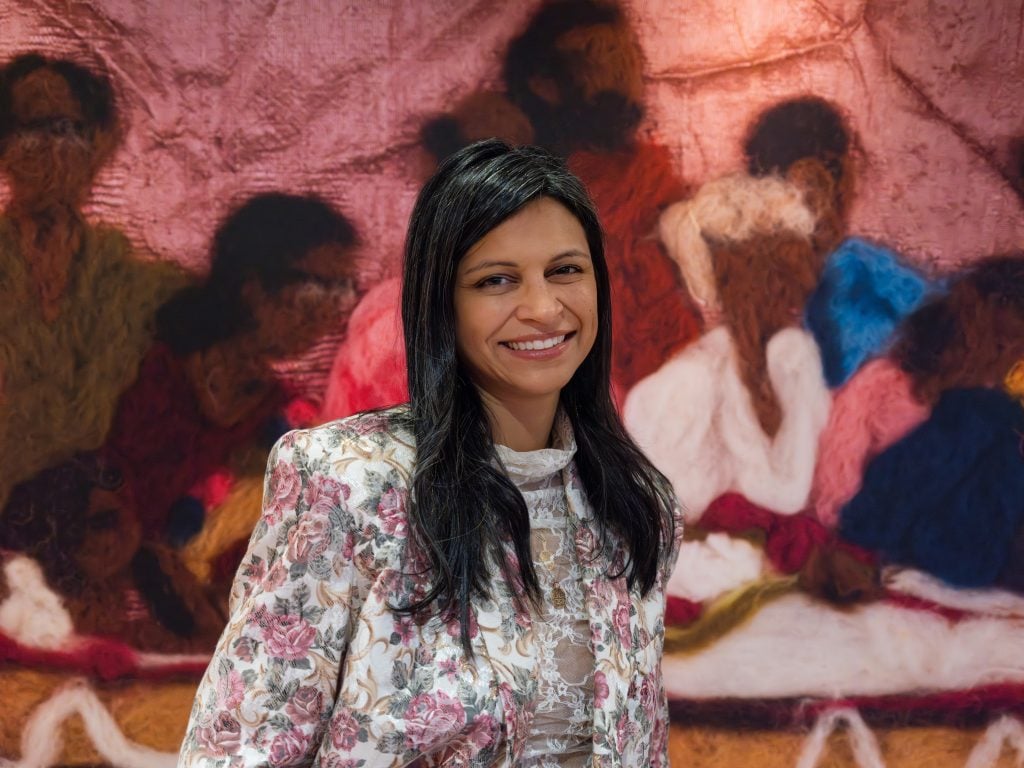
On one of the colder mornings in the last days of January, American artist Melissa Joseph walked a group of journalists through her latest, slightly unorthodox exhibition space—several buildings in Rockefeller Plaza—as part of the inaugural 2024 “Art in Focus” exhibition presented by Rockefeller Center and Art Production Fund (through April 19).
In the exhibition, Joseph’s works are displayed at 10, 30, and 50 Rockefeller Plaza buildings, but the most comprehensive showing is at 45 Rockefeller Plaza, where her works with found objects—a growing facet of her practice—and felt works—her most recognizable—are shown in vitrines as well as in a monumental, 125-foot-long display on the lower-level documenting details from felt pieces based on personal archival photos.
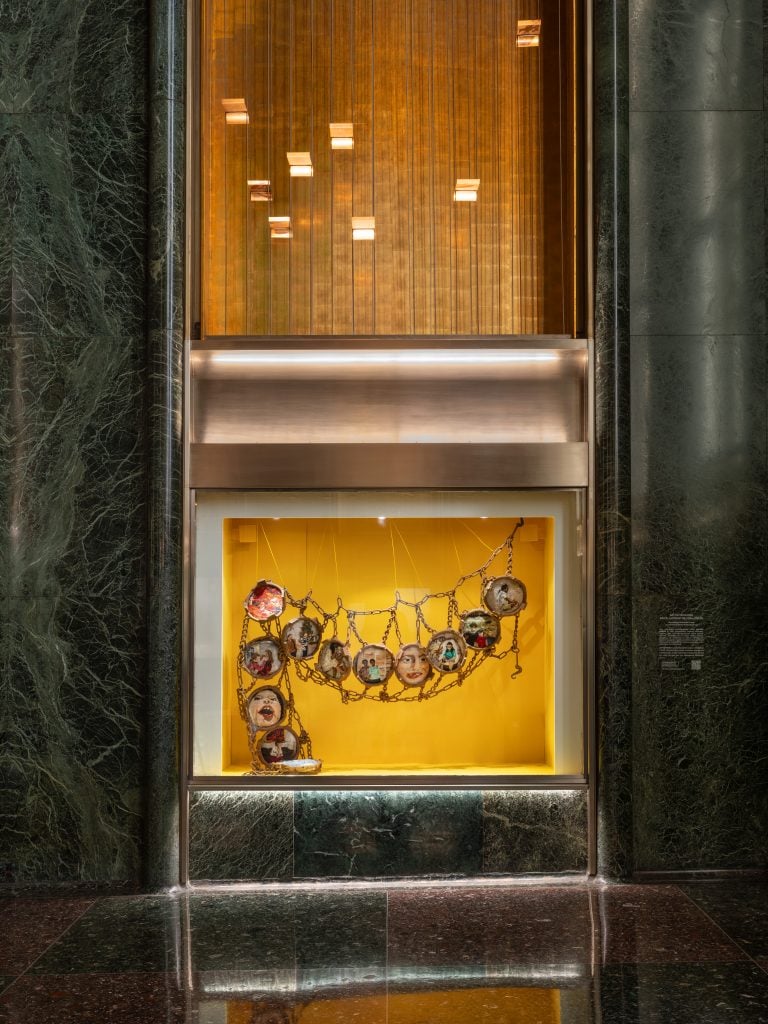
Installation view of Melissa Joseph’s work at 45 Rockefeller Plaza, New York. Photo: Daniel Greer. Courtesy of Art Production Fund.
The exhibition at Rockefeller Center is significant for its enormity and the fact that it marks Joseph’s very first public art exhibition. Speaking to a small group at the exhibition’s preview, Joseph described the opportunity to show her work in public as “surreal,” adding that “It lets me reach an audience you can’t always reach, and share some moments of tenderness, an emotional moment, with the world.”
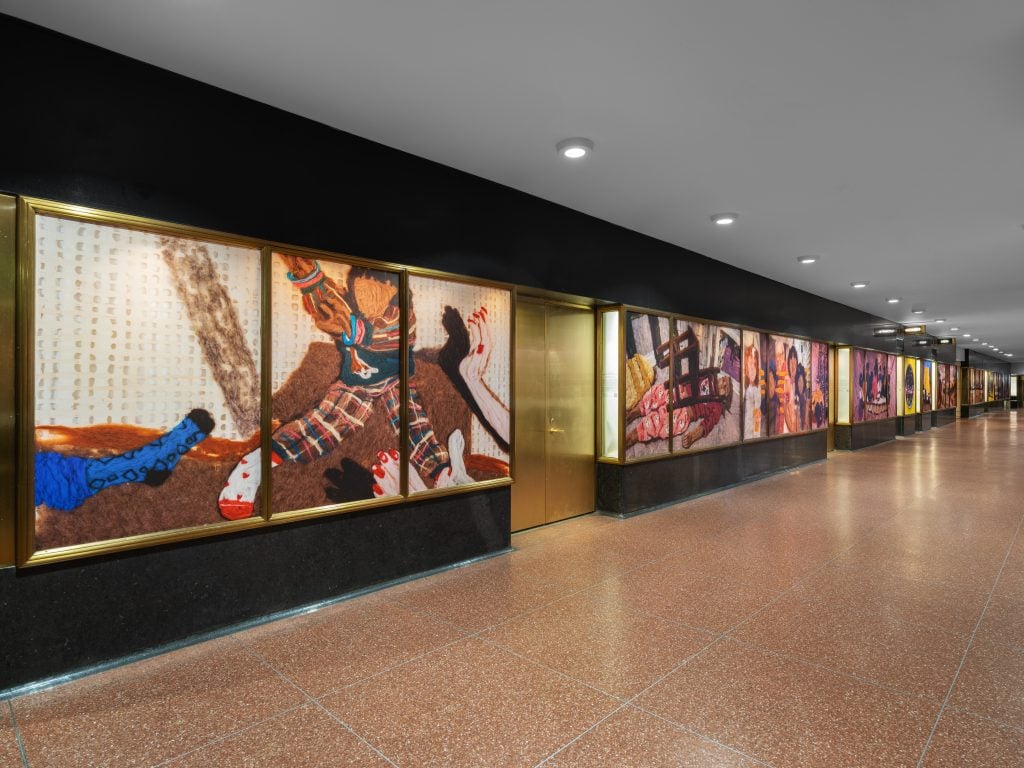
Installation view of Melissa Joseph’s work at 45 Rockefeller Plaza, New York. Photo: Daniel Greer. Courtesy of Art Production Fund.
It also follows on the heels of her much-talked-about show with Margot Samel late last year, “Irish Exit,” which included several of the works that are now featured in the 100-plus foot display at Rockefeller, offering visitors specifically seeking out her work as well as the hundreds of thousands of commuters who will pass by it the benefit of seeing her felted works up close and in extreme detail.
A rising figure within the realm of fiber and textile arts, as well as the larger art world too, it might be surprising to learn that Joseph has only been working with felt since 2020 and only began working as an artist full-time in 2022. “In retrospect now, everything seems sort of accelerated, it’s crazy. I can’t explain that.” Joseph mused about her career as of late from her studio at the Elizabeth Foundation for the Arts.
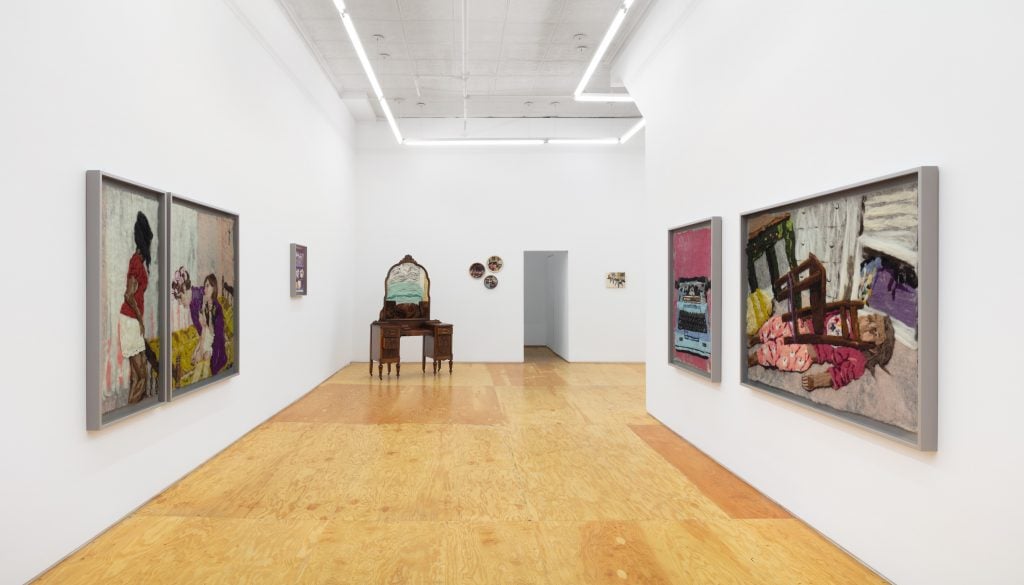
Installation view of “Melissa Joseph: Irish Exit” (2023). Photo: Pierre Le Hors. Courtesy of Margot Samel, New York.
Originally from a rural area of western Pennsylvania, navigating childhood in an Irish and Indian family in a predominantly white and conservative region, her interest in art started young. Joseph started taking art lessons in the fifth grade at a local convent with a nun who taught oil painting. “I was basically only allowed to do Bob Ross reproductions while listening to ABBA. I did that for seven years straight. Every once in a while, after I finished the Bob Ross one, she [the nun] would let me do a ’wild one,’ where I could paint what I want, like abstract flowers.” (Joseph’s mother sent the former instructor press from the solo at Margot Samel and the nun wrote the artist a letter saying she was “very proud and knew [Joseph] was going to be great.”).
Despite the early inclination toward art and art making, when it came time to decide what to study in college, practicality won over. “I was pre-med at Barnard. I hated it, and I was squeamish. But I was still making things, like handbags from clothing,” she said. Ultimately, she settled for a liberal arts degree without an art focus. Following a period of reorienting after graduation, she went back to school at the Fashion Institute of Technology, earning her A.A.S. in textile design, and soon began working as a designer at a small company in New York’s fashion district.
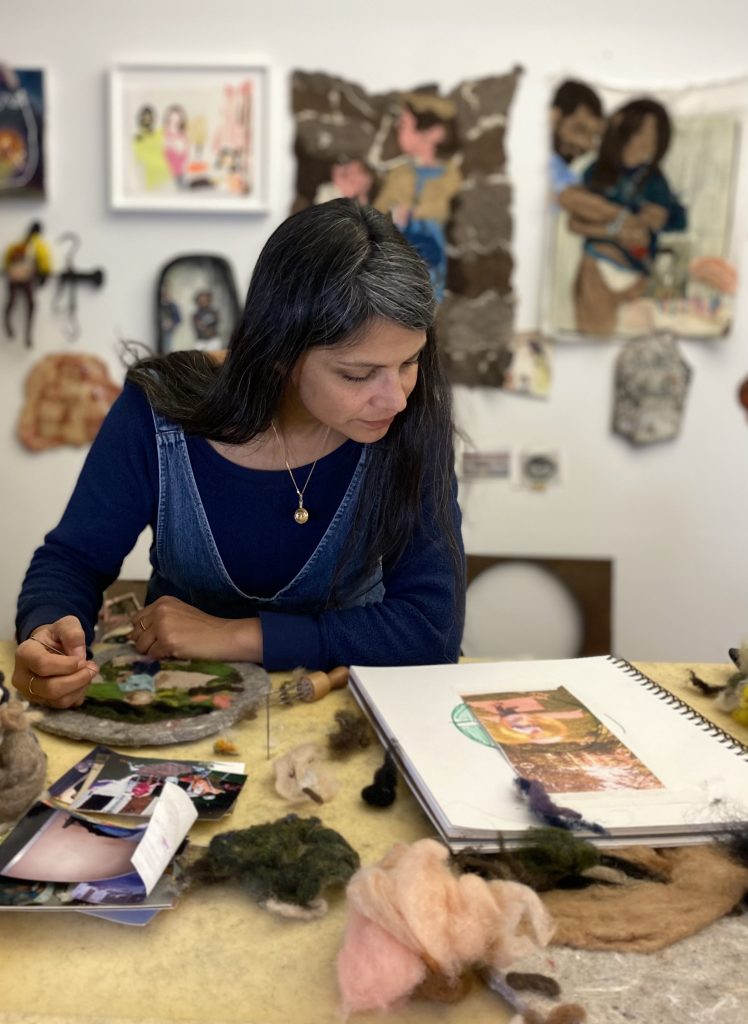
Melissa Joseph. Photo: Mara Poch. Courtesy of the artist.
As the textile industry turned to computer programs rather than hand-drawn or painted pattern creation, Joseph decided to try something else. Again, focusing on finding a career path that would supply some degree of stability, she returned to school, this time studying art education at the Rhode Island School of Design, where she graduated in 2008; “I would be able to get a job that had insurance, and, in my mind, I could teach in different places internationally. I could have summers off to do my art and travel.”
All of these suppositions proved true, and through 2016 Joseph taught both in the United States and abroad, from a school in Napa, California to Washington, D.C., Italy, and Switzerland, to name a few. “That’s how my brain works. I saw teaching as a way to do multiple things…But it was like a shoe on the wrong foot. It was close, but it wasn’t it. And you can never rest, or at least I can never rest in that state. I think it’s partly why I moved around to different schools—maybe another school, maybe this other city,” she explained.
Three days into the 2015 academic school year, while Joseph was teaching in Cincinnati, her father died. “One of the takeaways from my dad’s death was that time was running out, and I needed to pursue some of these dreams that I had.” Joseph finished out teaching until the end of the school year while she simultaneously began applying for M.F.A. programs. She ultimately decided to study at the Pennsylvania Academy of Fine Arts (PAFA), in part, to be closer to family.
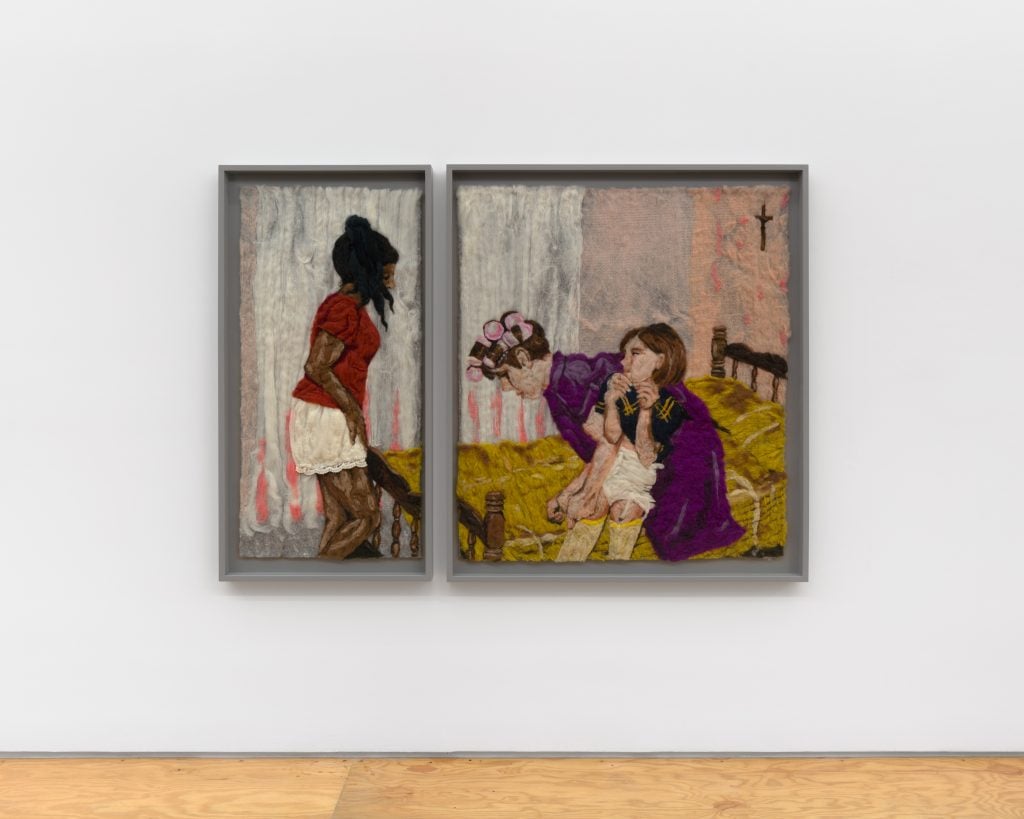
Melissa Joseph, Wedding Ablutions (2023). Photo: Pierre Le Hors. Courtesy of the artist.
When the pandemic hit, Joseph like countless other artists around the world was largely confined to her studio, where she began experimenting with various mediums and media she had on hand. Within the year, she began seriously needle felting. Though she had explored the possibilities of various fibers and materials before (she’d tried printing family photos on Indian silk and wet felting) needle felting offered a horizon of new possibilities.
“I love needle felting because it’s painterly, and I have more control over the needles. You can be very precise…I had been amassing this body of work and I was so excited by this magical language that I felt, more than with any other material, I was able to bring everything I’ve learned together, all the things I knew about painting and sculpture, and all the things I knew about teaching kids form and composition, aggregating these disparate bodies of knowledge and skill sets. It coalesced.”
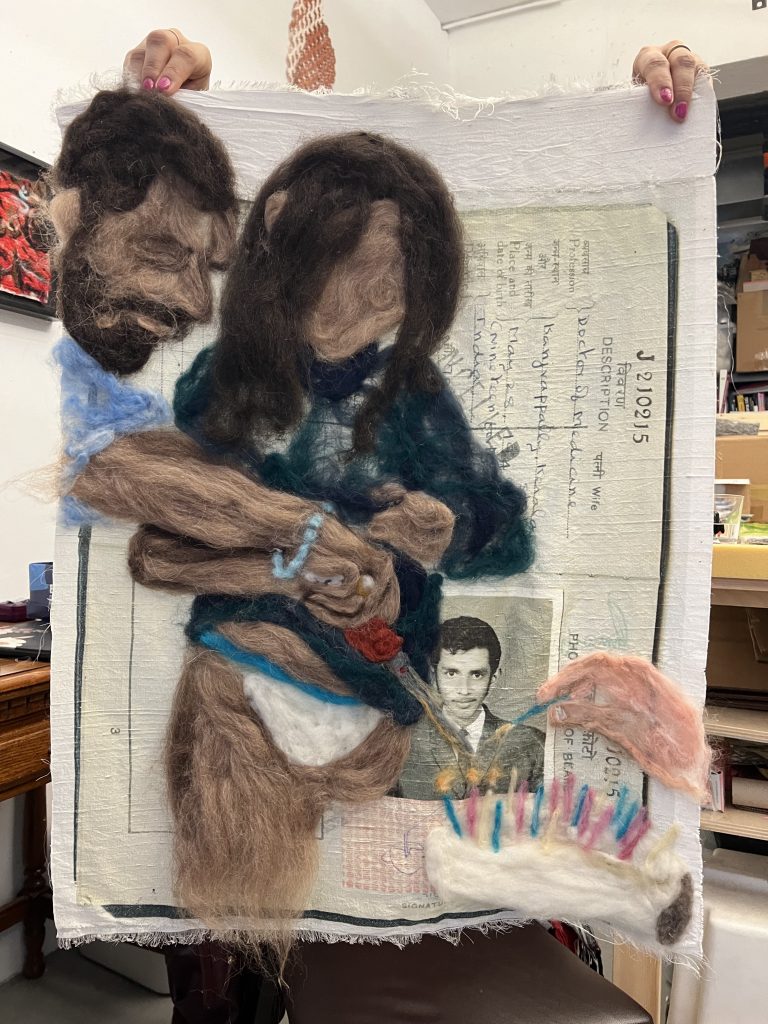
Melissa Joseph, Flannel nightgowns, homemade cakes, and Garfield underwear (2020). Photo taken at the artist’s studio by the author.
First attempting to felt on silk, she eventually began using industrial felt, which is created from shredded fabric and spoke to Joseph’s interest in found objects, as the primary support. Despite the years of experimentation and material trialing, one point that has remained consistent throughout her practice has been her primary sources of inspiration: memory, familial history, and autobiography. These themes can be found throughout her oeuvre, with family photos from childhood and images of her father as a young man or her grandparents often serving as starting points which she translates into fiber. The very first work she ever needle-felted was a photo of her father.
“I feel really committed to being like a conduit for these stories. My dad, like many first-generation immigrants, really focused on survival, and they don’t have the luxury to reflect on that experience and make art about it. And it’s fallen on me to be the one that preserves and archives their stories because otherwise they’re gone,” she explained.
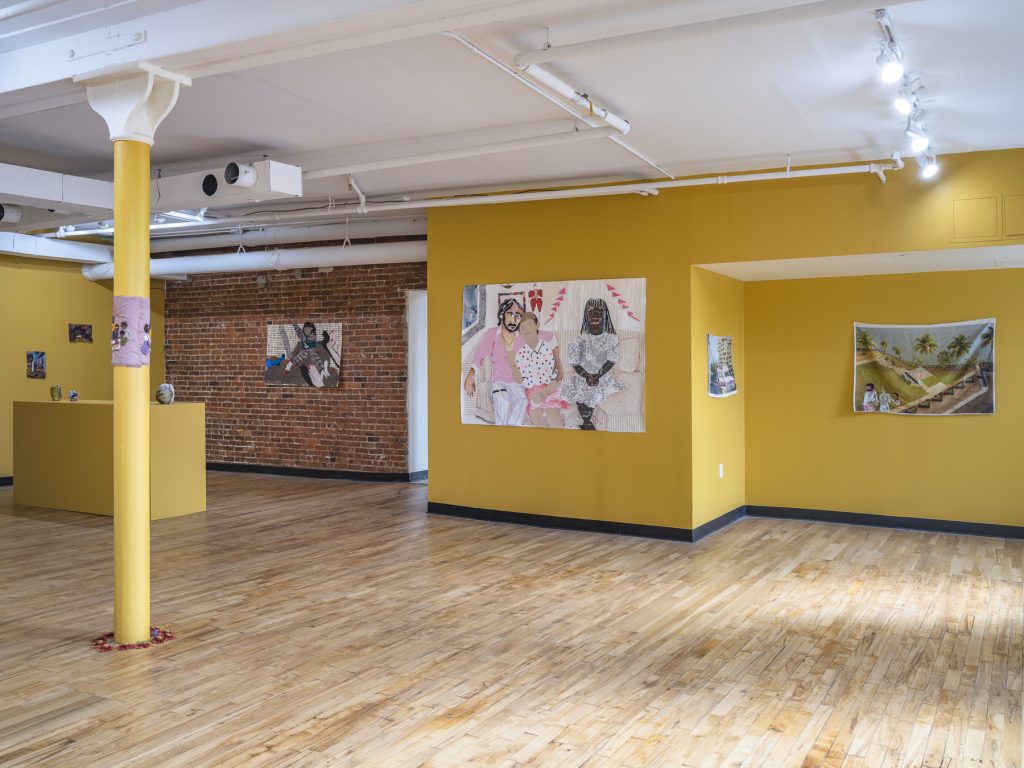
Installation view of “Melissa Joseph: Née” (2021). Photo: Garrett Carroll. Courtesy of the artist and Regularnormal, New York.
While at PAFA, Joseph didn’t have any social media, opting instead to use business cards to hand to people who came through during the school’s open studios. Finally, Joseph’s sister created the artist an Instagram account. “That’s how I met Danny Báez, someone showed him my Instagram. He came to my studio and offered to represent me pretty much on the spot. You really need someone to vouch for you in the art world, and he really opened a lot of doors for me.”
Danny Báez, who co-founded Artnoir and MECA art fair, helms the gallery Regular Normal in downtown New York, established in 2020, and is where Joseph had her very first solo show in the city, “Melissa Joseph: Née,” in 2021. Báez also showed her work at NADA Miami that year as well. “Before Danny, I was getting into residencies, was getting into open call shows, but no one was buying the work. It was just going out, then coming back.”
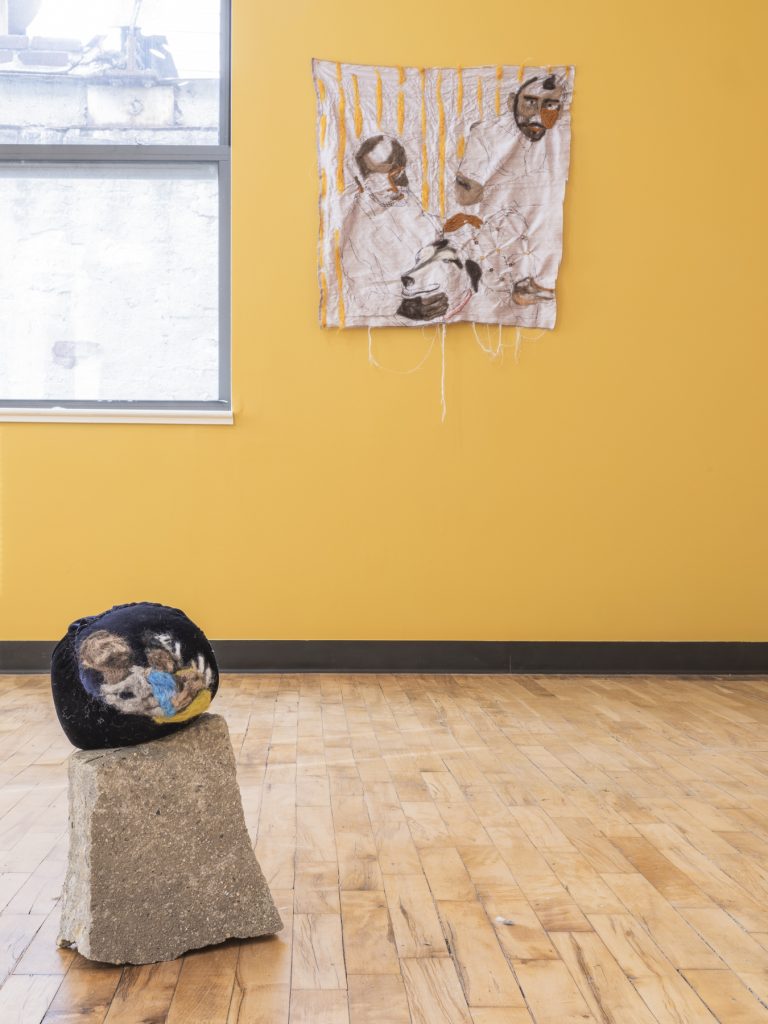
Installation view of “Melissa Joseph: Née” (2021). Photo: Garrett Carroll. Courtesy of the artist and Regularnormal, New York.
Joseph continued to work in the art world, including at the Adolph and Esther Gottlieb Foundation, while simultaneously honing her practice, until taking the leap and dedicating herself fulltime to artmaking the following year—and thus far to considerable success. From 2022 to today alone, she has been included in nearly two dozen group exhibitions and been the subject of two well-received solos, aforementioned “Irish Exit” and “Conflicting Truths” at Swarthmore College. And, of course, the expansive public show at Rockefeller Center, which is on view through April 19, 2024, the exhibition will in many ways culminate with a free public Art Sundae children’s workshop in April hosted by Joseph and echoing her past work experience as a K12 teacher.
And things are not slowing down for the artist. Currently Joseph is participating in Artspace San Antonio’s 2024 Spring Residency, working in a studio space whose first resident was Felix Gonzalez-Torres. Inspired by Gonzalez-Torres’s frequent use of objects and items that viewers can take with them, Joseph offers small ceramic pieces for visitors, highlighting her evolving and expanding material vernacular. The residency will culminate with an exhibition opening on March 28 and on view through May 19. Further, it was recently announced that Margot Samel will be showing a solo presentation of Joseph’s work at this year’s Liste art fair in Basel Switzerland.
What has perhaps most resonated with viewers is her singular execution of felting—one of the oldest and most recognizable traditions in the world—and how she imbues every work with profound and personal resonance. As the artist continues to come into her own, this moment in her career offers a particularly intriguing moment in her material exploration.





